In addition to having the right set of skills and an always sunny disposition there are moments of serendipity in freelance life that can end up leading in completely unexpected directions. I was perusing the Freelance Outdoor Instructors Facebook page one day when I saw a request for information from anyone who had climbed Elgon, an extinct volcanic peak on the Uganda/Kenya border. Elgon was the peak I trekked with my first ever Camps International group so it had a special place in my affections in addition to being a cracking mountain showcasing a diverse range of Ugandan landscape. I replied in the affirmative expecting to be quizzed about the route, but it turned out the lovely folks at Tribal Tracks (www.tribaltracks.co.uk) were actually looking for a leader for a charity challenge in January 2020 and I seemed to fit the criteria 🙂 Not only that, but they needed somebody to do a reccy prior to the adventure to ensure everything went as smoothly as remote expeditions in the developing world can possibly go! I had undertaken Elgon via the more commonly used Sasa River route last time, so this trek from the Sipi side was going to fill in all the gaps without actually taking our team to the summit.
Sipi is a small town perched on a hill and has become famous because of the three eponymous waterfalls and also the quality of the Arabica coffee grown in the area. The Sipi route onto Elgon starts at the Kapkwai Gate just inside the National Park but I had a short wander from the village through the local farms to the gate on my first evening before returning to my comfy bed and a plate of delicious and filling beef stew and rice at the Blue Star Homestay (https://www.booking.com/hotel/ug/blue-star-homestay.en-gb.html), a community project run by the ebullient Moses who was to be my guide for the trek. It was an early start for us as we had decided to squeeze the first two days of the trek into one long one as we had a small team and were pressed for time. The team consisted of myself, Alfy from Let’s Go Travel (https://www.ugandaletsgotravel.com/), Moses, John, the cook, Karim and Mehdi, our UWA Rangers and a team of 3 awesome porters! The route from Kapkwai to Tutum Cave was mostly through jungle, en route we saw Hyena footprints etched in the red mud, not to mention Hornbills and Turaco in the trees. The route was undulating and the paths were a little greasy with the wet season rain, but we made our way to Tutum in time for lunch which John and his team knocked up for us in the cook hut and we finished just as a torrential rain storm passed through. The cave at Tutum is home to thousands of Bats and the noise (and the smell) were tremendous as we passed beneath the waterfall and carried on through the rain forest until we reached Heather country. Here in the UK, Heather is a pretty but low growing shrub, not so in Uganda where the plants can grow up to six feet in height. We ended our long day at Kajeri Camp, a wild, rough site next to the river and tucked into a narrow valley with sheer cliffs on both sides. As the rain rolled in we set up our tents in the barn and after a hearty tea it was an early night and a well earned kip.
Day three dawned under clear blue skies and we started our day with a really stiff climb out of the valley and back into Heather country and some spectacular views. In the distance we could see Mubiyi, one of the lesser Elgon peaks and there were beautiful wildflowers and Giant Groundsel plants giving a kind of Jurassic Park feel to the landscape. It was a day of ups and downs as we descended into valleys and climbed up the other side, the whole landscape being rucked up and crumpled. It made for some frustrations as for much of the day we could see our target points but a number of valleys lay between us and them! None the less our redoubtable team pressed on and eventually we reached the caldera edge under greying skies and with the pitter patter of rain on our hoods. The views here were wonderful as we dropped down into the heart of the caldera, it was boggy and wet underfoot and we squelched our way towards the ridgeline on the far side that was going to take us to Mude Cave, our camp for the night. The last hour was beautiful, the rain stopped, the sun came out and we eventually arrived at the great campsite where the fire was lit and mugs of tea were awaiting us and were very welcome! Mude Cave is a beautiful spot and we spent the evening watching the ebb and flow of the clouds as they moved up and down the valley in an almost tidal manner.
As I had already done the summit day and we were on a tight schedule, our last day saw us head down the Sasa River trail instead of up to the peak of Wagagai itself sitting at a mighty and memorable 4321m. The path down is clearly a more trodden one and is broader and easier walking. We headed through the heather to the Ranger Station perched aloft on a high hill before a long, at times steep descent took us down to the Sasa River camp where we had a short break. A real highlight of the last rainforest section was a great view of a Hartloub’s Turaco an endemic species to the region and a truly beautiful bird. We descended the stairs of the “Wall of Death”, in reality nowhere near as terrifying as it sounds and then the last section took us on very narrow, slippery, rocky paths through fields of maize and onions to the end of the route at Bumasola!
Elgon is a fantastic mountain and it will always have a special place in my heart. The Sipi trail is wild and rough and remote. Over the section to Mude Cave we didn’t see another soul after the first hour out of the Exploration Centre, not only that, but no sign of humanity….no pylons, roofs, roads or telegraph poles…It’s a wonderful landscape of wild flowers, rocky ridges and mountain tops and I am excited about the January expedition and having the chance to do it all over again.
- Ian@comewalkwithmeuk.co.uk
- 07855 648786

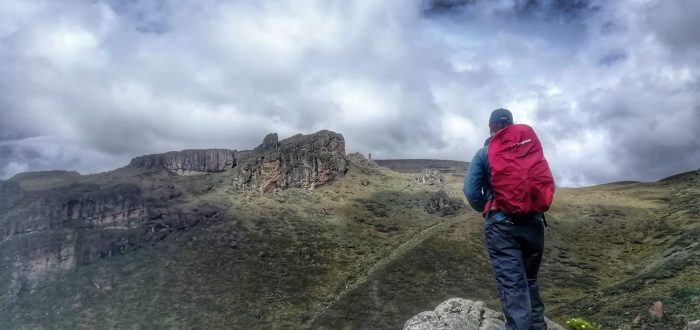
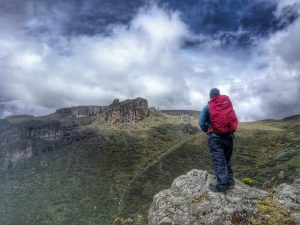
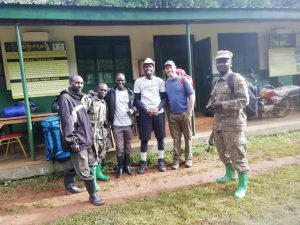
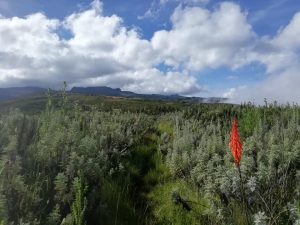
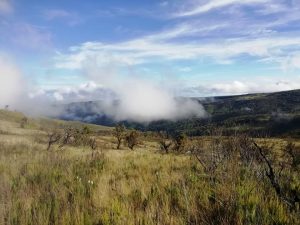


You really had a great adventure. Thanks for sharing.
Testimonials
Recent Posts
Categories